Phase-Over-Phase GOABS® Overview
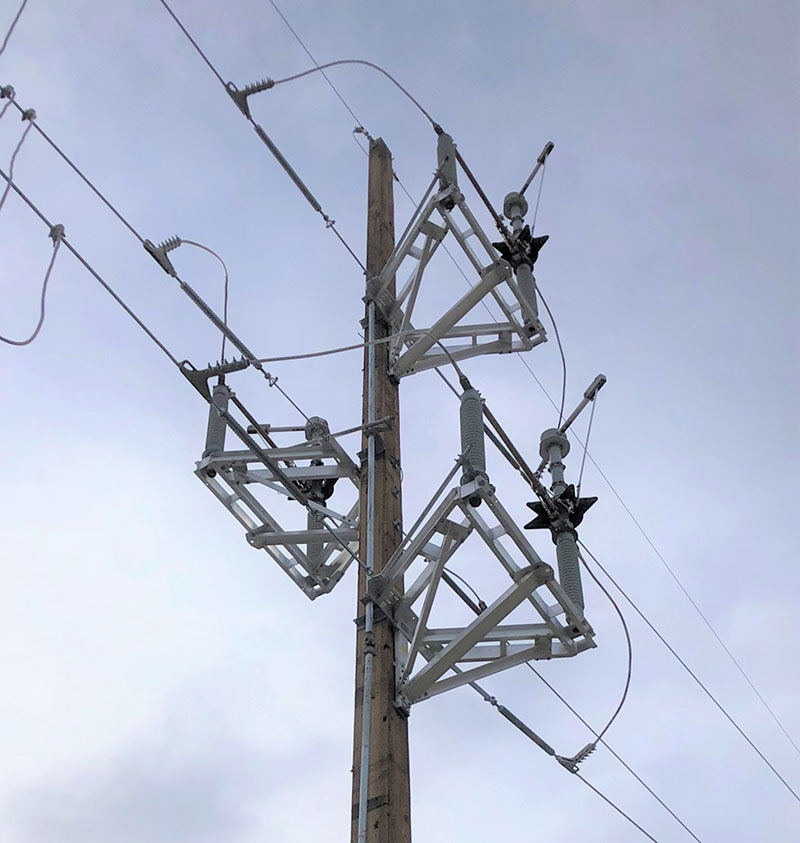
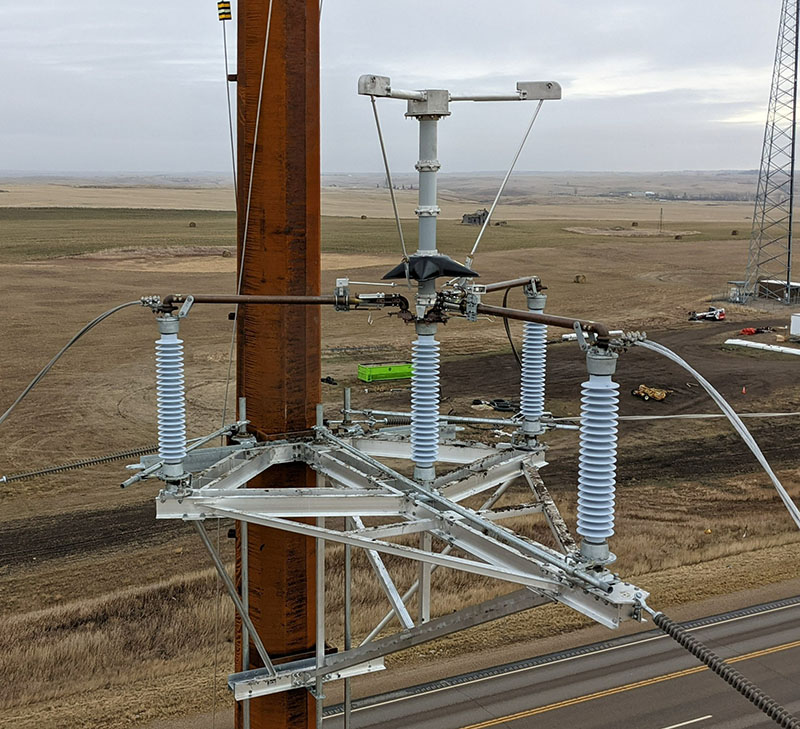
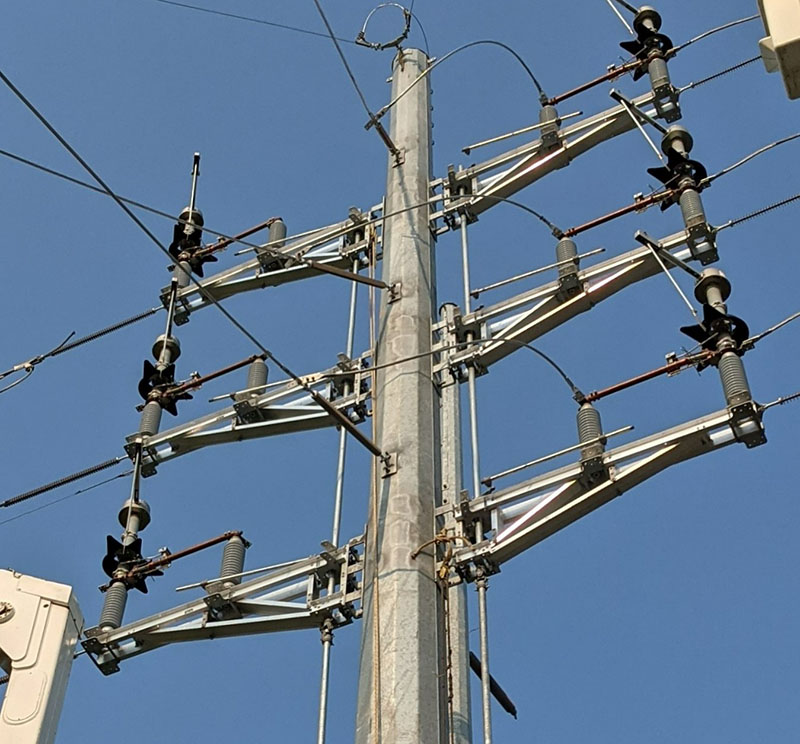
Phase-over-phase switches provide very economical sectionalizing and circuit control at tap and tie switching points. Mounted on a single pole structure in the line, their use can minimize line right-of-way requirements and significantly reduce the costs of land and equipment associated with conventional substation switching.
Phase-over-phase GOABS® utilize side-break style switches, mounted horizontal upright on aluminum and/or steel support structures. The switch is designed for maintenance-free operation in severe environmental and operating conditions. The operating effort to open and close the switch is minimal, even at higher voltages; no slamming is ever required. The switch is positively toggled when in the fully closed position, so the switch stays closed under adverse conditions, such as excessive pole deflection, vibration, and galloping conductors, without the use of blade locks or other latching devices.
Tie and Tap Switching – the economics of ‘bundling’
Two-way and three-way phase-over-phase switches employ a multiple-switch concept where individual switch pole units are arranged in an integral design, sharing insulators, interrupters, and other switch components. Because components are shared, the cost of switching becomes proportionally less expensive when compared to other conventional switch configurations.
In addition, the combining of two or three switches into one ‘bundle’ provides a single location for tap or tie circuit control, whether local, remote, or automatic. This facilitates the addition and use of automation equipment, such as motor operators, rtu’s, and line sensors, which support switch operation through supervisory control or auto-sectionalizing. Like the sharing of switch components, the sharing of automation equipment makes the cost of control proportionally less expensive.
Major Benefits
- Minimizes right-of-way expense
- Multi-way switches reduce the number of dedicated switch pole structures
- Multi-way switches reduce initial purchase and total installed cost, compared to equivalent number of single-way switches (no line wrap)
- Multi-way switches substantially reduce installation and adjustment time, compared to equivalent number of single-way switches (no line wrap)
- Multi-way switches share other associated devices, such as interrupters, motor operator power supplies, RTU’s and communication devices, and line sensors, significantly reducing cost on a ‘per way’ basis
Available configurations
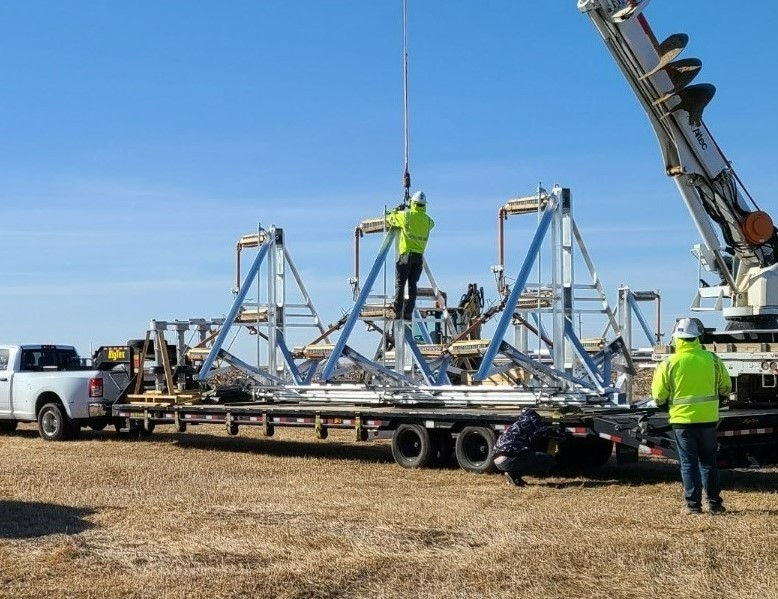
Factory Assembly and Shipment Options
One, two and three-way switches can be supplied either unitized or with factory pre-assembly. Both options simplify field installation and adjustment, greatly reducing installation time, labor and cost, and reduce the possibility of adjustment error by field personnel.
SEECO unitized one, two and three-way switches are fully assembled and adjusted on a heavy-duty galvanized steel tube and include factory adjustment of the interphase pipe and associated levers, cranks, clevises, along with synchronous clocking of all three phases. Before shipment, unitized switches are operated and undergo rigorous factory acceptance testing to ensure optimal performance when installed. Unitized two and three-way switches reduce typical field installation time by up to 75%. Unitized two and three-way switches can be supplied up to 69 kV and one-way switches up to 138 kV.
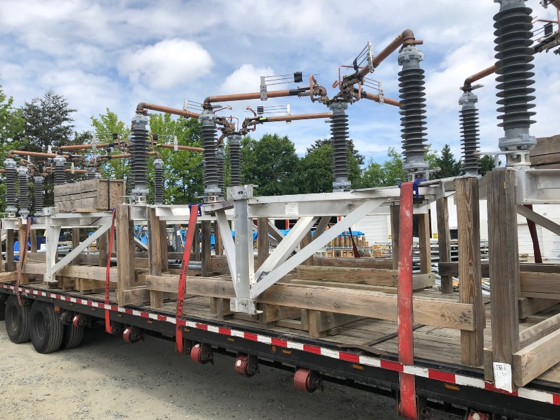
SEECO factory preassembled one, two and three-way switches are shipped on disposable wooden support stands, with live parts fully adjusted on insulators and rotating insulator bearing stops set for proper operation when energized; all critical adjustments are done by factory personnel to exact dimension. Preassembled switches are factory acceptance tested before shipment. Preassembly reduces typical field installation time by up to 50% and insures that single phase assembly and adjustment are to factory specification. Preassembled one, two and three-way switches can be supplied up to 230 kV.
